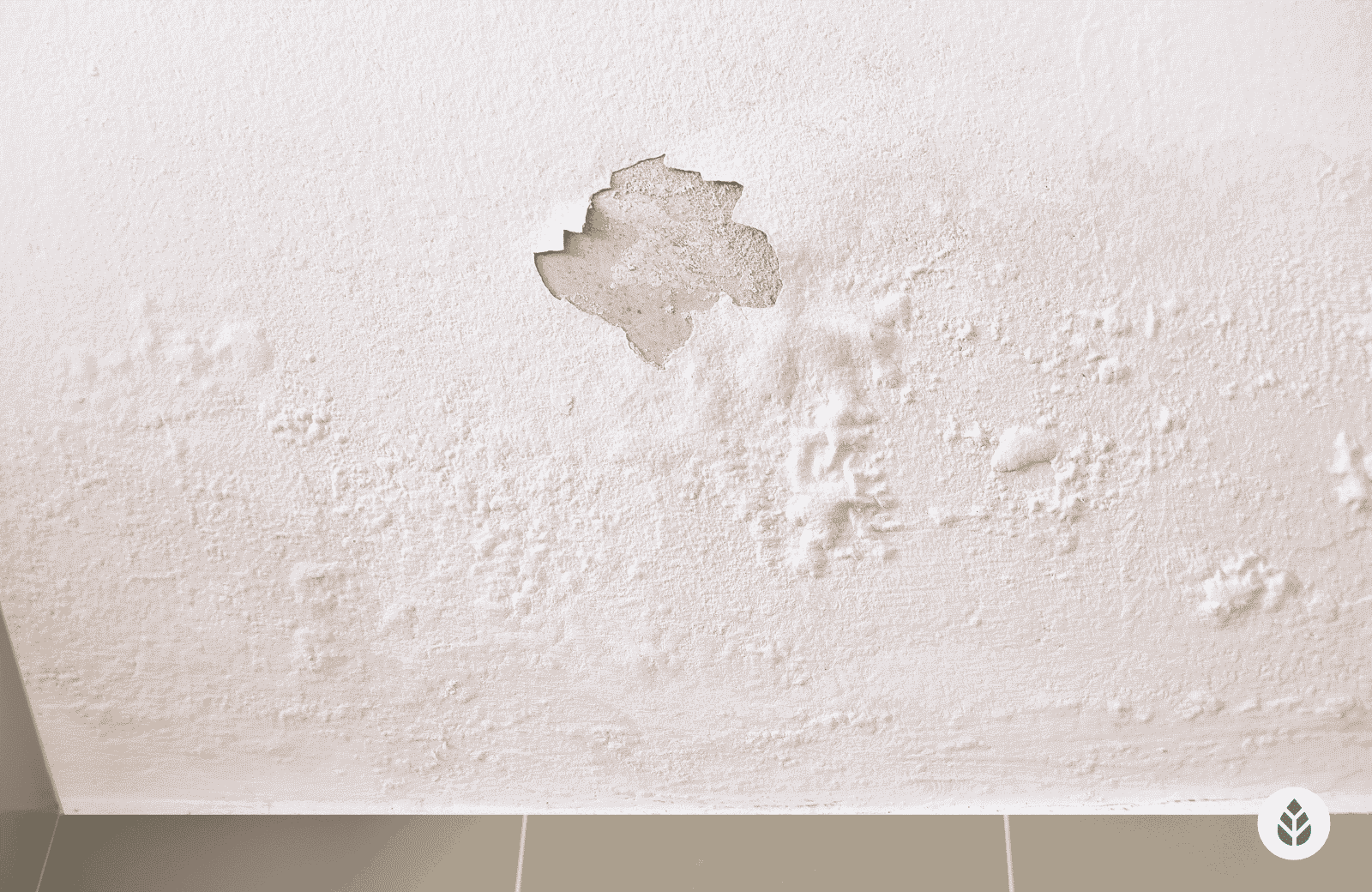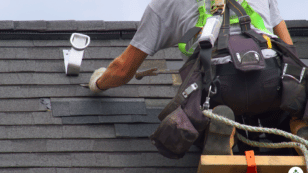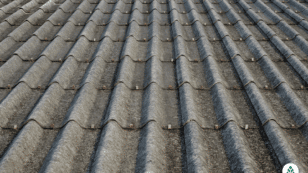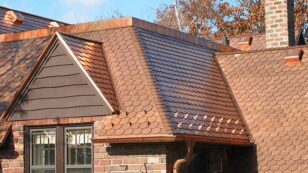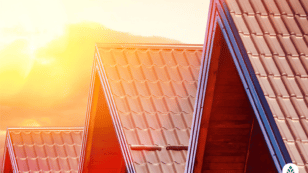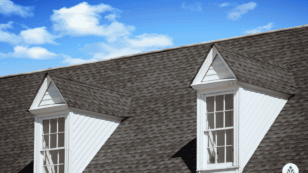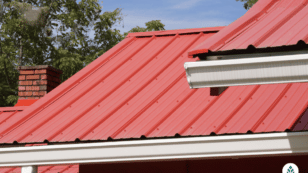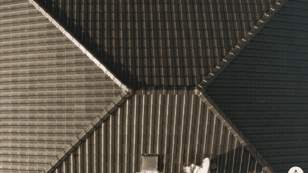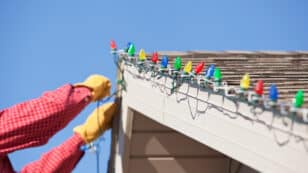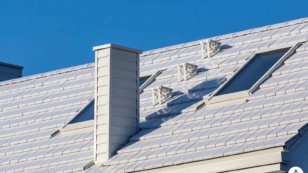
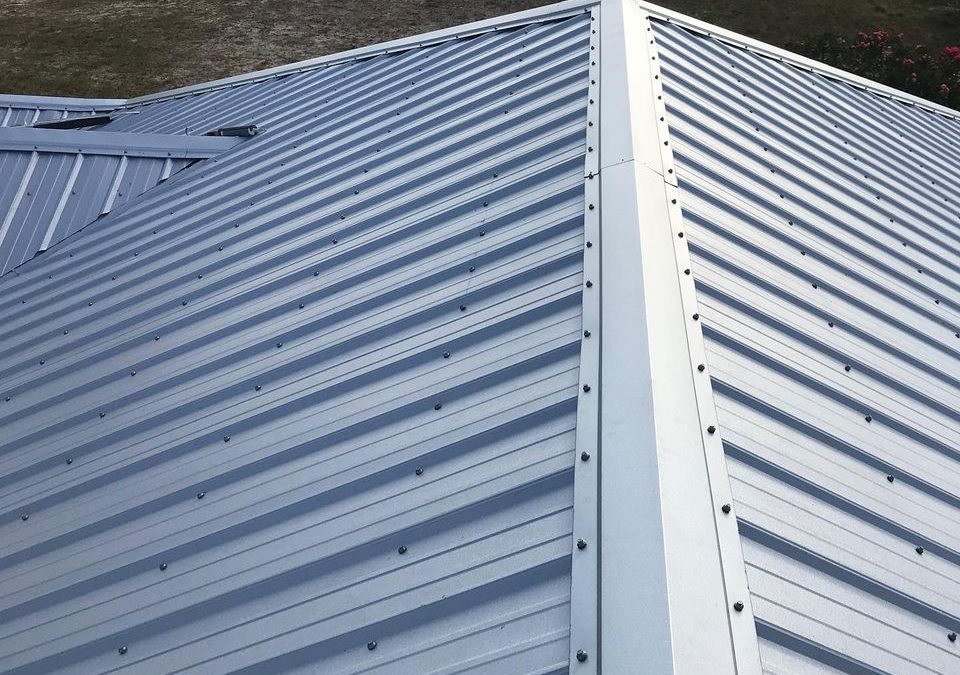
Best Roof Sealants for Leaks (2024 DIY Repair)
In this guide on roof sealants, you’ll learn:
- Why is sealing roof leaks important?
- What are the different kinds of roof sealants?
- What are the best roof sealants and how do you choose?
If you are looking for the best roof sealant to repair roof leaks in your home, this guide will help you make the right decision to ensure your repairs last.
Each product and or company featured here has been independently selected by the writer. You can learn more about our review methodology here. If you make a purchase using the links included, we may earn commission.
Repairing Leaks with Roof Sealant
Roof leaks can be a major hassle, and if they aren’t addressed quickly enough, in worst-case scenarios they can necessitate thousands or even tens of thousands of dollars in repairs. Luckily, there are plenty of roof sealant products you can use to patch your roof yourself and keep your home protected from water damage.
In this guide to roof sealants, we’ll discuss the best roof sealant options suitable for DIY roof repair and home improvement. We’ll also include some information about how each sealant is used so that you can decide which product you’re comfortable working with on your roof.

Power Home

Average cost
Pros
- Positive industry reputation
- Lifetime or lengthy warranty
- 10+ years of experience
- Positive customer reviews
- Uses eco-friendly materials
- Well-trained, certified installers
- Variety of roofing styles available
Cons
- Limited variety of roofing materials
- Short or nonexistent warranty
- No financing information available
- Expensive
- Little information available on company website

Erie Home
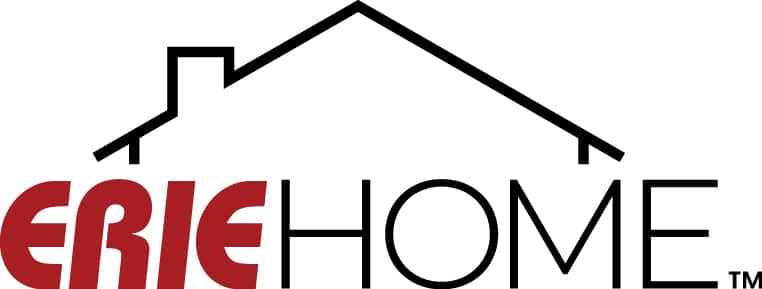
Zero Down - 18 months same as cash with minimum monthly payment
Average cost
Pros
- Lifetime or lengthy warranty
- Widespread availability
- 10+ years of experience
- Positive customer reviews
- Uses eco-friendly materials
- Financing options available
- Well-trained, certified installers
- Uses durable materials meant to last
- Variety of roofing styles available
Cons
- Limited variety of roofing materials
- Expensive

Aspen Contracting

Average cost
Pros
- Positive industry reputation
- Lifetime or lengthy warranty
- Widespread availability
- 10+ years of experience
- Positive customer reviews
- Financing options available
Cons
- Little information available on company website
Why Is Sealing Roof Leaks Important?
Sealing existing leaks in your roof or areas where you’ve identified damage is essential for three primary reasons:
- Unrepaired leaks can lead to severe property damage
- Leaks reduce your home’s energy efficiency
- Left unaddressed, leaks can eventually necessitate expensive roof replacement
We’ll discuss why each of these factors makes sealing roof leaks a worthwhile process, even if you pay to have a professional carry out the work.
Protects Against Water Damage
The main reason to repair leaks in your roof as soon as you spot them is to avoid water damage in your home. When it rains or snows on your roof, even small leaks and wet patches can allow substantial amounts of water inside your home.
When this happens, the water can:
- Soak into insulation, rendering it ineffective and compromising your home’s energy efficiency
- Penetrate wood framing materials, causing rot and mold growth
- Put your home’s electrical system at risk.
The cost of remediating water damage or removing mold growth will almost always be higher than what you’d pay to patch leaks in your roof, so it’s a much better option to address leaks as quickly as possible.
Protects Against UV Damage
Roof sealants can also be used for UV protection. Routine exposure to the sun’s ultraviolet rays can cause some roofing materials to not only lose their color, but also degrade in terms of flexibility and strength.
Many roof sealants are designed to deflect UV rays, which can help mitigate sun damage.
Makes Your Home More Energy-Efficient
While avoiding water damage is the primary impetus for most homeowners to patch their roofs, the decrease in home energy efficiency that leaks cause is another good reason to address them as quickly as possible.
Any areas where water can get into your home can also allow conditioned air to escape. In the winter, roof leaks can let heated air out of your living area more quickly, which means you’ll spend more on heating costs and put additional strain on the environment.
Similarly, cool air from your living space can escape through roof leaks, causing less comfortable indoor temperatures and prompting you to crank up the AC — also wasting energy.
Water entering through leaks in your roof can also lead to increased humidity in your living area, causing the temperatures inside your house to feel more extreme. Most homeowners combat indoor humidity by demanding more from their heating and cooling systems, which means increased energy bills and strain on the environment as well.
Helps Avert Roof Replacement
Finally, patching leaks in your roof can help you avoid the need for total roof replacement. If leaks get bad enough, you’ll likely see severe damage to your shingles, underlayment or roof decking, which could require total replacement.
As you’ll see further down in this article, patching a roof leak can cost as little as $20 and an hour or so of your time, but replacing a roof because of a leak that worsened over time can cost around $9,000 on average.
Patching roof leaks and maintaining a sound, intact roof are especially important if you plan on installing solar panels in the future. If you’re exploring solar installation, all solar panel companies will assess the health of your roof before installing equipment to ensure the roof is sound and won’t need replacement shortly after the installation.
If they determine there is a problem due to small leaks that have gone unaddressed, you could be looking at thousands of dollars in repair or replacement costs that could have been avoided with a simple leak repair.
If you choose a solar installer with a limited or nonexistent workmanship warranty, you may be responsible for leak repair after roof penetrations are made for solar panels. The sealers mentioned below are solid options for patching solar-related leaks.
What Are the Best Roof Sealants for DIY Roof Repair?
There are a wide variety of roof sealants that you can buy from home improvement stores like Home Depot and Lowe’s or online from sites like Amazon. These include:
- Polyurethane sealants
- Tape sealants
- Silicone sealants
- Rubber sealants and
- Acrylic sealants
We’ll get into these different types of roof sealants later in this article, but below, we’ll discuss some of the top roof sealants for DIY roof repair.
1. LR Liquid Rubber Waterproof Sealant
This liquid polymer sealant goes on easily over most roofing surfaces, including asphalt roofs, metal panels and more. When it dries, it creates a waterproof seal over the portion of the roof that was treated.
In fact, this sealant is rated for use on gutters and even pond equipment, so you can rest assured that it will stand up to just about any amount of precipitation.
It’s not as easy to apply as sealants that can be used with a caulk gun, but it’s water-based, which means it’s relatively easy to work with. You can spread it on with a brush, foam applicator, roller or even a sprayer.
In addition to the protection it offers from water, this product also helps resist fading from UV exposure.
2. Flex Seal Liquid Rubber
Flex Seal is similar to LR Liquid Rubber, as it comes in liquid form in a can. It’s also water-based, so it goes on quite easily with a bristle or foam brush or a roller. You might have some difficulty applying this with a sprayer, as it’s a bit thicker.
This product forms a watertight seal over the application surface, so it’s great for patching small and medium-sized roof leaks. It comes in smaller-size containers than LR Liquid Rubber as well, so it’s a better option for homeowners who only have minor leaking issues and don’t need five gallons of product.
This sealant also protects your roof from UV rays.
3. Gorilla Waterproof Patch & Seal Tape
If you’re looking for ease of application, the Patch & Seal Tape from Gorilla is an outstanding option for smaller leaks.
This product is a tape that creates a watertight and airtight seal with some roofing materials, including metal and slate, but it’s not suitable for patching asphalt shingles. It’s also important to keep in mind that it won’t adhere to previously applied roof sealant, so this isn’t ideal for repatching.
To use it, you simply stretch the tape over the damaged or leaking roof material and apply pressure to seal. It creates excellent adhesion and a bond that is extremely strong and durable, so this could be considered a permanent leak solution.
4. Liquid Rubber Seam Tape
This roof patch tape from Liquid Rubber is a great option if you need to add some reinforcement to roof seams. While it won’t stick directly to asphalt shingles, it can protect the seams underneath from water intrusion.
This product is generally easy to apply, but you will need to pull up shingles to access the roof seams below.
It creates a waterproof seal but doesn’t protect against UV damage, so you’ll need additional protection over it if you’re applying it on top of a metal roof.
5. Loctite PL S30 Roof and Flashing Sealant
Finally, the Loctite PL S30 sealant comes in a tube that you can use with a caulk gun. This method of application is super easy and is ideal for small areas where minor leaks are occurring.
This high-performance product is designed to be used on both flashing and roof material, so it’s multipurpose and can serve many needs for future roofing system leaks as well.
It goes on black, so it will blend in nicely with darker-colored roofs, and it can be applied under shingles to remain totally hidden.
Types of Roof Sealants
There are a few different kinds of roof sealants you can choose from, all of which differ in their ease of application, price and efficiency. We’ll discuss the different kinds of sealants below and offer some insight into how well each one performs.
Polyurethane
Polyurethane is a popular waterproofing material for three main reasons:
- It’s affordable
- It’s relatively easy to apply
- It offers good protection from water
Polyurethane is thinner than silicone, which means you can use a roller or sprayer to lay down a protective roof coating. You also won’t need any solvents to clean up spills.
Polyurethane sealants provide excellent protection from water, so they’re great options for sealing roofs in areas that get heavy precipitation. However, they don’t protect well against UV rays.
Tape
Tape roof sealants are among the easiest to apply, as they go on just like any other kind of tape. You simply measure the length you need, cut and apply pressure to create the seal.
Tape sealants are affordable, but they are only ideal for patching minor leaks. Additionally, they often aren’t meant to stick directly to roofing material — like asphalt shingles — and are instead meant to seal roof seams below.
Silicone
Silicone is considered the best waterproofing material, so it’s ideal for use on EPDM or flat roofs. It also protects well against UV rays and fading from sun exposure. However, it’s among the most expensive roof sealaer options, so it’s generally not suitable for sealing large leaks or treating entire roofs.
Silicone roof sealant is also viscous and a bit more challenging to work with than polyurethane and other liquid sealants. After it dries, it becomes paintable and mildew-resistant, making it a great option all around.
Rubber
Rubber roof sealants come in a thin liquid form, which makes the application process a breeze. These products protect well against water but aren’t particularly UV resistant.
Since the liquid is thin and flows easily, rubber sealants are great for patching small leaks as well as treating entire roofs or large sections of roofing material.
Here’s an example of how one homeowner used liquid rubber to patch a roof:
Acrylic
Acrylic sealants (sometimes called elastomeric sealants) are the best for providing UV protection, so they’re popular in areas that receive abundant and intense sunlight. Some even have reflectivity to deflect damaging UV rays away from your roof.
However, acrylic sealants aren’t waterproof, so they’re most useful in areas like Arizona or California, which receive heavy sunlight but minimal precipitation.
Acrylic roof sealants are easy to apply, and they’re also affordable, so they can be used to add whole-roof protection to your home.
How to Choose the Best Roof Sealant for Your Home
Unfortunately, choosing a roof sealant to protect your home isn’t as simple as picking the most affordable one. There are a few additional things you should consider, which we’ll discuss briefly below.
Water Resistance
If you’re patching a leak in your roof, chances are you want a sealant that is water resistant at the very least. Some products — like acrylic sealants — aren’t ideal for waterproofing protection.
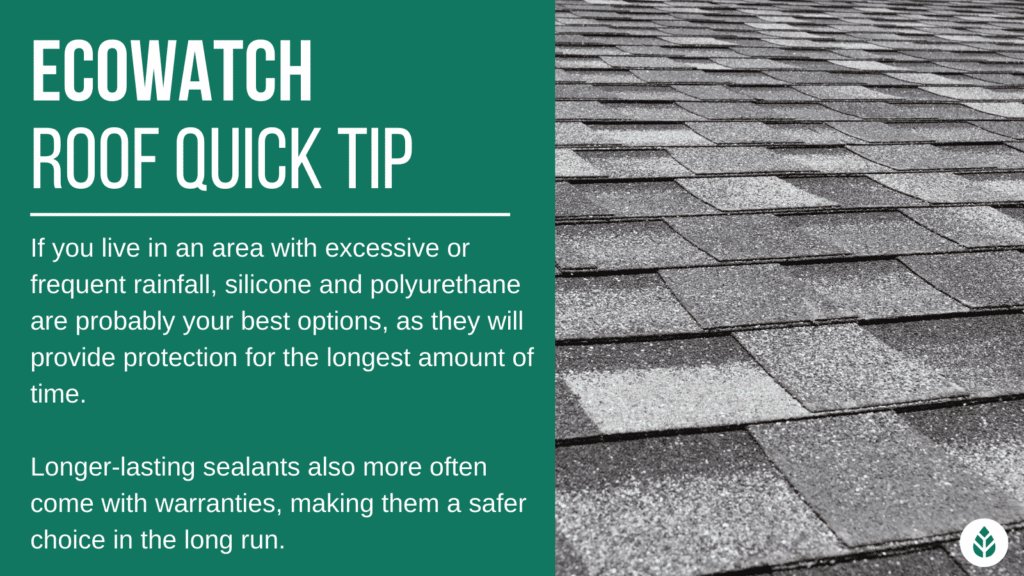
If you’re looking for maximum protection for small leaks, silicone is likely your best option, with polyurethane and rubber sealants also being great choices. These are considered waterproof and can stand up to constant exposure to:
- Heavy rainfall
- Snow accumulation
- Ice
- Hail
If you live in an area that receives minimal rainfall and you’re more concerned with your home’s energy efficiency or UV damage, then an acrylic or tape sealant might suit you better and cost less.
You can check a product’s data sheet for specific information about water resistance.
Durability
All of the products mentioned above vary in durability as well, especially when extreme weather conditions are a concern.
If you’re looking for a permanent fix for a water leak, you should opt for silicone, polyurethane or tape sealants. Rubber sealants can also work well, although they won’t last as long as something like silicone.
Additionally, you should consider what kind of abuse your sealant will endure. If you live in an area with excessive or frequent rainfall, silicone and polyurethane are probably your best options, as they will provide protection for the longest amount of time.
Longer-lasting sealants also more often come with warranties, making them a safer choice in the long run.
Ease of Application
If you’ll be completing your roof leak repair as a DIY home improvement project, it’s worth considering how easy your sealant is to apply.
Tape sealants are the easiest, followed by caulk-gun sealants and thin liquid sealants, like acrylic, polyurethane and liquid rubber. Silicone is viscous and will be the most challenging to work with.
If you have a larger issue or aren’t willing or able to get up on your roof, you may need to hire a roofing professional to do the job for you.
Protection from UV Rays
Finally, if you live in an area where sun damage is your biggest concern, then choosing a sealant that provides good UV protection is paramount.
Acrylic sealants are the best for UV protection, but they offer little in the way of water resistance. Something like silicone can also provide good UV protection, but the cost could be prohibitive if you’re looking to protect your entire roof from UV damage.
Ultimately, you’ll need to choose a product based on the protection it provides from both water and sun exposure.
FAQ: Roof Sealant
Below, we’ll answer some of the most common questions we get about the different kinds of roof sealants and which are best for different purposes.
There is no single roof sealant product that will be best in all situations. Ideally, you should choose a sealant based on the cost, ease of application and the protection it provides from water and sun exposure.
That being said, our top pick for roof sealant is the LR Liquid Rubber Waterproof Sealant.
Most sealants won’t permanently stop leaks, but they can provide years of protection. If you’re looking to avoid water intrusion, it’s important to choose a water-resistant or waterproof sealant for the best results. Silicone and polyurethane typically offer the best protection from water.
In most cases, yes! Roof sealants can help avoid expensive water and sun damage to your roof, potentially saving you hundreds or even thousands of dollars in repairs. In some cases, roof sealants can offer enough protection to avoid a full roof replacement, which means they could save you an average of $9,000.
All roof sealants come at different prices depending on the type of sealant, the amount you buy and the brand.
Silicone sealants will tend to be the most expensive, at around $400 per five-gallon container. An equivalent amount of polyurethane roof sealant will average around just $75.
For small roof repairs, you could pay as little as $15, while larger, more severe leaks could cost several hundred dollars to seal properly.

 233k
233k  41k
41k  Subscribe
Subscribe 
